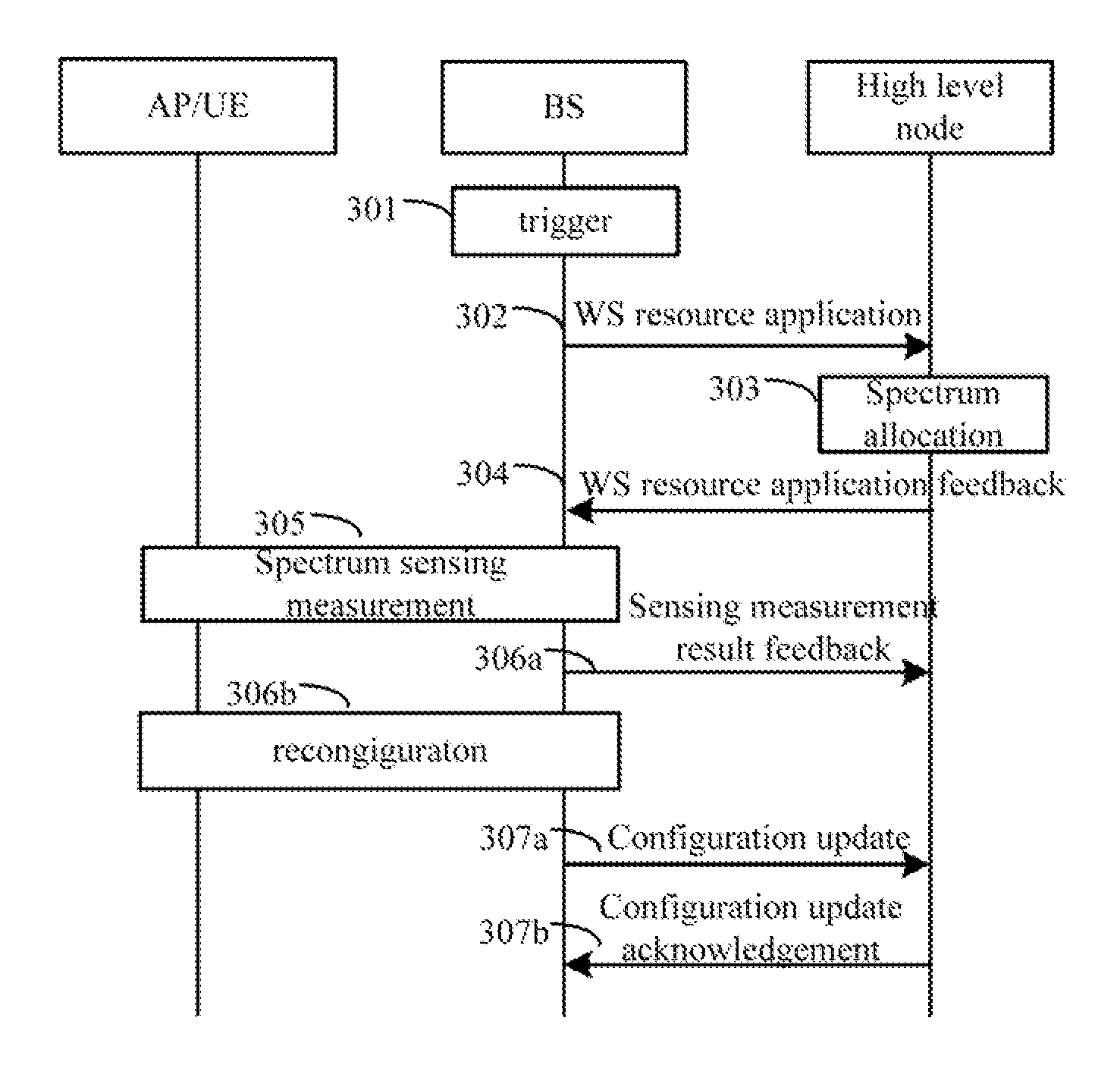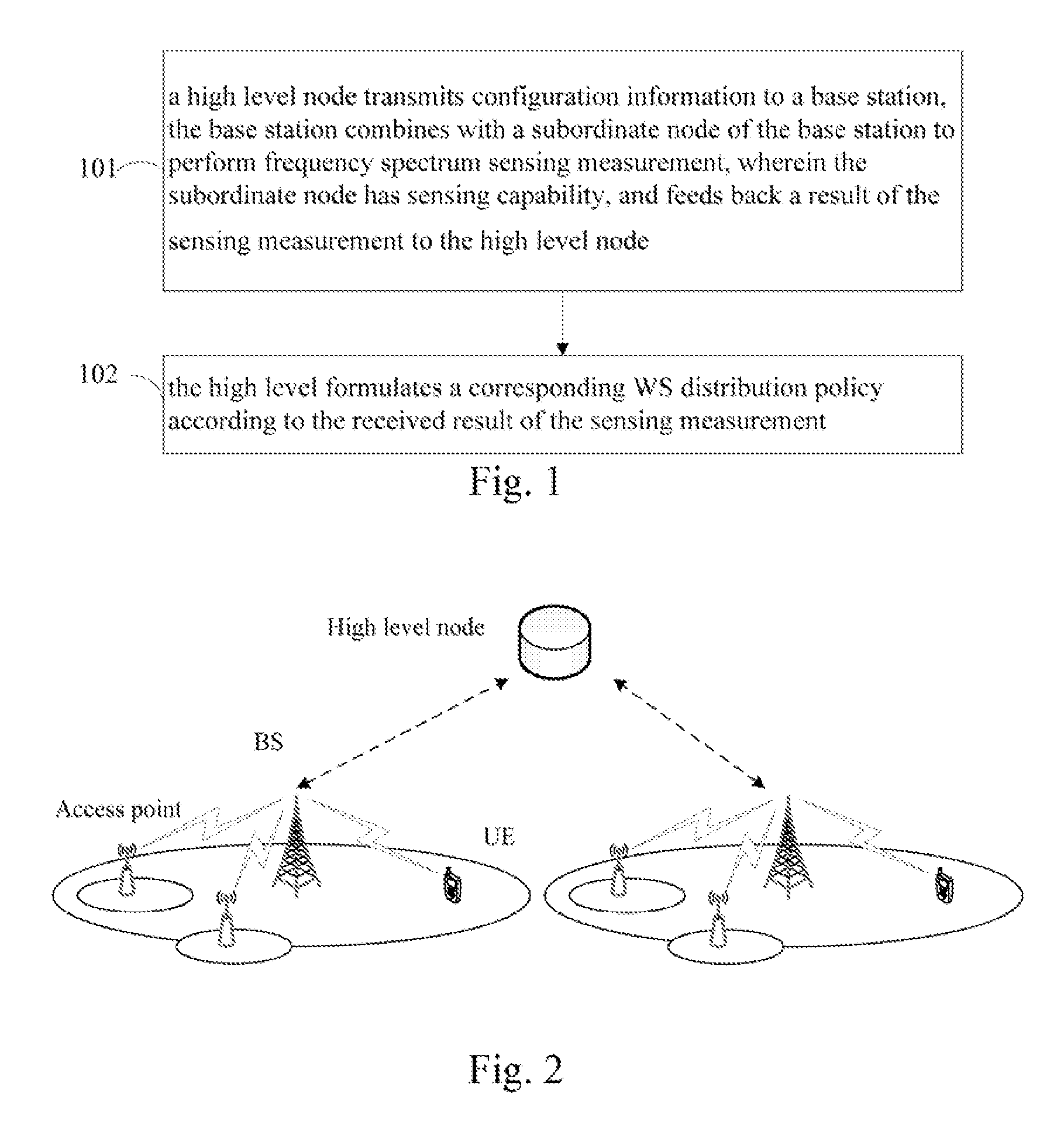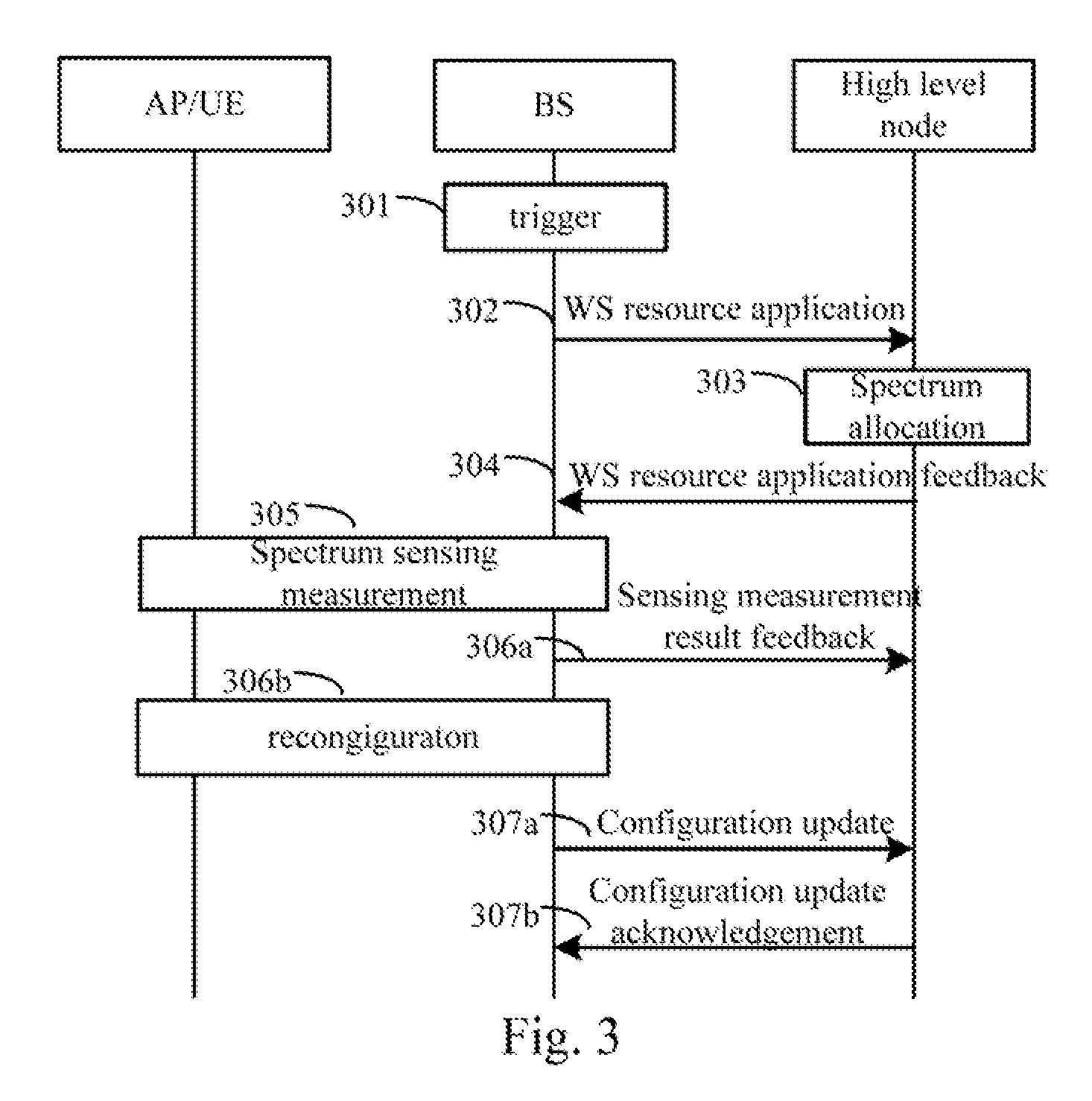Sensing aiding method and system for cognitive radio
a technology of cognitive radio and aiding method, which is applied in the field of wireless communication, can solve the problems of low utilization rate of spectrum resources, limited spectrum resources which carry radio services, and extremely tense situation of spectrum resources, so as to reduce the probability of base station configuration failure and reduce the overhead caused by configuration failur
- Summary
- Abstract
- Description
- Claims
- Application Information
AI Technical Summary
Benefits of technology
Problems solved by technology
Method used
Image
Examples
embodiment 1
[0054]Method the signalling flow when the acquired WS resources are available is shown as FIG. 3; and the signalling flow is described below in detail.
[0055]Step 301: a BS triggers to borrow WS resources.
[0056]Specifically, the reason for triggering can be that the communication quality of a downlink of the BS cannot meet the Quality of Service (QoS) or the overload is over heavy and the like.
[0057]Step 302: the BS transmits a WS resource application to the high level node.
[0058]Step 303: the high level node determines the radio frequency spectrum resources allocated to the BS according to the WS resource application transmitted by the BS and the WS information stored by the BS;
[0059]Step 304: the high level node transmits the WS resource application feedback to the BS.
[0060]Specifically, the WS resource application feedback includes the WS resources allocated to the BS, the transmitting parameter requirements on the spectrum, measurement configuration information, such as co-chann...
embodiment 3
[0100]if the interference is indeed caused by the co-channel or adjacent-channel system, continue to execute the flows after Step 407 of the
[0101]Method embodiment 5: when the acquired WS resources are unavailable, the signalling flow corresponding to the reallocated frequency spectrum resources of the high level node is shown as FIG. 6; the first sixth steps are the same as those in the method embodiment 3, no further description is needed; and the following steps are described in detail.
[0102]Step 607: the high level node formulates a spectrum allocation policy after receiving the result of sensing measurement, and reallocates the WS resources to the BS.
[0103]Specifically, the result of the sensing measurement includes the availability of the WS resources; and when the WS resources are unavailable, the result of the sensing measurement further includes the interference source information.
[0104]The reason for making the decision of reallocating the spectrum resources by the high le...
embodiment 7
[0108]Method the flow of borrowing and configuring spectrum among different regions of the same system is shown as FIG. 8: and the embodiment is described below in detail.
[0109]The spectrum borrowing situations among different systems are described in the first six method embodiments, namely each secondary system borrows the WS resources of the authorization system; in the similar way, the disclosure is also suitable for the situation of borrowing the spectrum among different regions in the same system; at this time, the high level node includes the service condition information of the spectrum resources of each region of the system, the load state information of the spectrum resources of each region of the system and the communication quality situation information of the spectrum resources of each region of the system. The high level node may coordinate the relative interference source according to the interference source information in the result of the sensing measurement fed ba...
PUM
 Login to View More
Login to View More Abstract
Description
Claims
Application Information
 Login to View More
Login to View More - R&D
- Intellectual Property
- Life Sciences
- Materials
- Tech Scout
- Unparalleled Data Quality
- Higher Quality Content
- 60% Fewer Hallucinations
Browse by: Latest US Patents, China's latest patents, Technical Efficacy Thesaurus, Application Domain, Technology Topic, Popular Technical Reports.
© 2025 PatSnap. All rights reserved.Legal|Privacy policy|Modern Slavery Act Transparency Statement|Sitemap|About US| Contact US: help@patsnap.com



